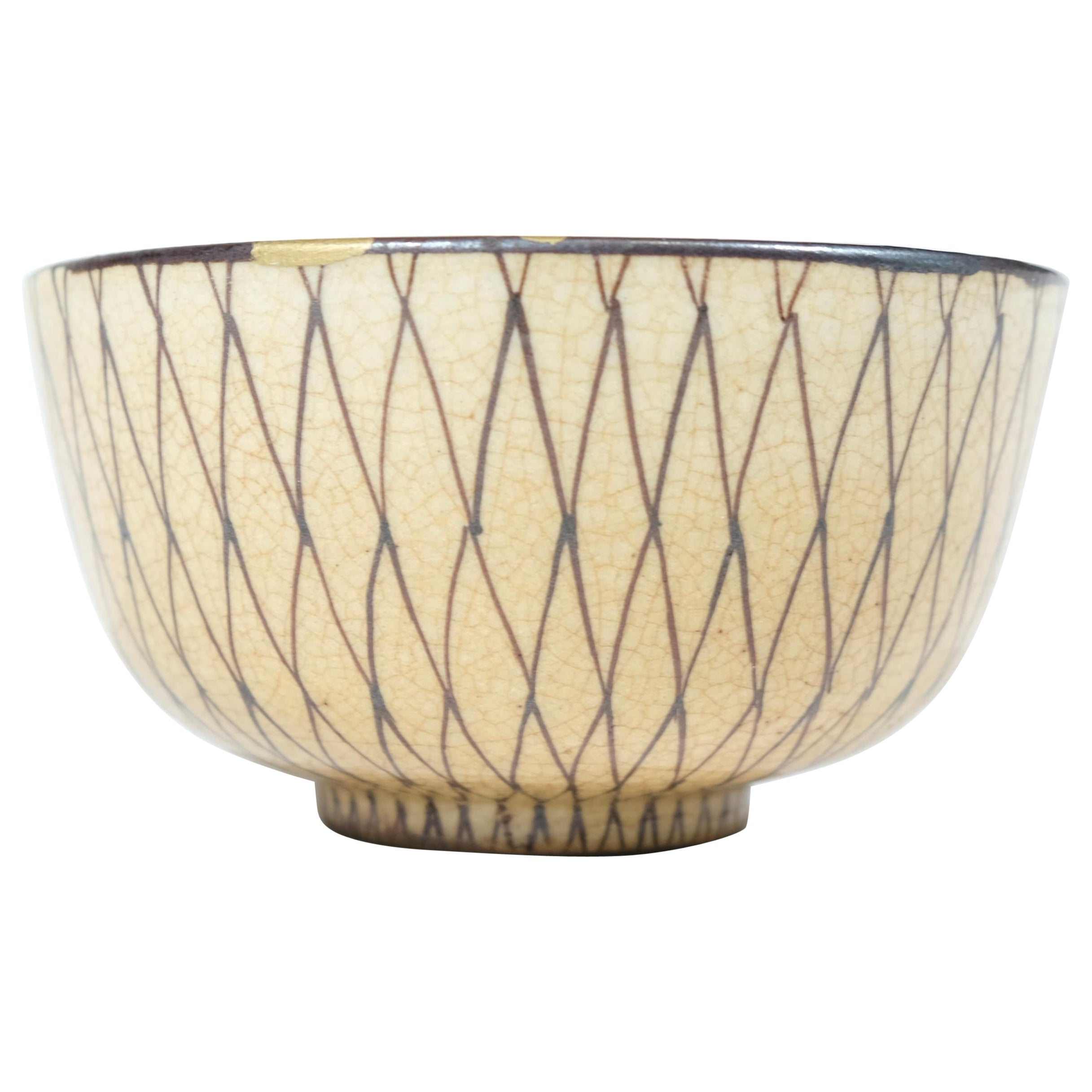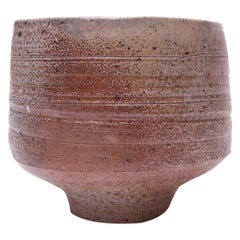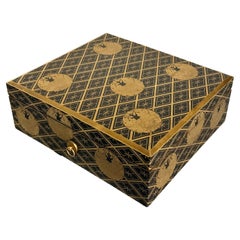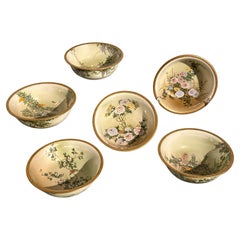Questions & Answers
Our trusted network of 1stDibs sellers answer common questions
What is a Japanese chawan?
1 Answer

Chawan literally means tea bowl. A Japanese chawan is a tea bowl meant to be held in both hands, often made of glazed stoneware.

Lotus GalleryMarch 17, 2021
Related Questions
- What is a Japanese Satsuma vase?1 Answer
- What makes a Japanese garden?1 Answer
- What is a Japanese tea house called?1 Answer
- How much is Japanese porcelain worth?1 Answer
Shop for Japanese Chawan on 1stDibs
Japanese Chawan 'Teabowl' Edo Period
Located in Stockholm, SE
A Japanese Chawan. Glazed pottery. 19th century or older. Provenance: Swedish early 20th century
Category
Antique 19th Century Japanese Ceramics
Materials
Ceramic
Japanese Chawan Teabowl, Edo Period
Located in Stockholm, SE
A well made Japanese Chawan. Earthenware glazed in yellow and turquoise colours. Some chips on the
Category
Antique 18th Century Japanese Ceramics
Materials
Ceramic
Japanese Ceramic Tea Ceremony Chawan
Located in Brooklyn, NY
Small Han Tsutsu-gata (half cylinder shape) Japanese tea ceremony chawan, circa mid-20th Century
Category
Mid-20th Century Japanese Mid-Century Modern Ceramics
Materials
Ceramic
Japanese Glazed Ceramic Gohon Chawan Tea Bowl
Located in Atlanta, GA
Hagi and Arashi kilns. This chawan was likely made in one of those kilns in Japan circa 19th century
Category
Antique 19th Century Japanese Meiji Ceramics
Materials
Ceramic
Antique Japanese Shino Ware Chawan Tea Bowl
Located in Atlanta, GA
On offer is a Japanese ceramic tea bowl (chawan) used in the traditional chado ceremony. The bowl
Category
Antique 18th Century Japanese Edo Ceramics
Materials
Ceramic
Japanese Mino Ware Oribe Type Chawan Tea Bowl
Located in Atlanta, GA
A Japanese Kutsu-gata (clog-shaped) chawan (tea bowl) circa 19th century possibly older. The
Category
Antique 19th Century Japanese Meiji Ceramics
Materials
Ceramic
Shop More furniture from Lotus Gallery on 1stDibs
Japanese Maki-e Lacquer Sutra Box with Peony Mon, Meiji Period, c 1900, Japan
Located in Austin, TX
A Japanese maik-e decorated black lacquer sutra box, kyobako, with peony mon design, Meiji Period, circa 1900, Japan.
The elegant lacquer box originally crafted to hold sutras, sacr...
Category
Antique Early 1900s Japanese Meiji Lacquer
Materials
Copper
Japanese Bronze Water Coupe, Eguchi as Fugen, Edo/Meiji Period, Japan
Located in Austin, TX
A very finely cast Japanese bronze water coupe in the form of the courtesan Eguchi riding an elephant, signed Kazutada, Edo to Meiji Period, mid 19th century, Japan.
The small and e...
Category
Antique Mid-19th Century Japanese Meiji Scholar's Objects
Materials
Bronze
Six Kinkozan Bowls with Birds and Flowers of the Months, Meiji Period, Japan
By Kinkozan
Located in Austin, TX
A very fine partial set of six Japanese Satsuma bowls decorated with flowers and birds of the months, signed Kinkozan, Meiji Period, circa 1900, Japan.
The set of six exquisitely pa...
Category
Antique Early 1900s Japanese Meiji Ceramics
Materials
Ceramic, Stoneware
Vintage Burmese Reclining Buddha, Carved, Lacquered and Gilt Wood, circa 1970's
Located in Austin, TX
A charming vintage Burmese Mandalay Style carved, lacquered, and gilt wood figure of a reclining Buddha, 1970's, Burma.
The delightful Buddha figure is portrayed resting comfortably...
Category
Vintage 1970s Burmese Sculptures and Carvings
Materials
Wood
Large Japanese Imari Fluted Charger, Edo/Meiji Period, Mid 19th Century, Japan
Located in Austin, TX
A large and impressive Japanese Imari porcelain fluted charger with scalloped rim, signed Kaji(chu?), Edo to Meiji Period, mid 19th century, Japan.
The magnificent Japanese Imari charger measures 25" in diameter, and is decorated in the typical imari palette of underglaze blue with overglaze red, orange, blue, and green enamels with gilt highlights. The large charger also features fluted sides and a scalloped gilt rim.
The design of the charger is centered on a central floral medallion with three large chrysanthemum blossoms and vegetal scrolls. Radiating out from the central medallion are various brocade patterned sections that roughly follow the shape of the fluting. Some larger sections feature images of cranes and minogame (turtles with long tails), both symbols of longevity, while other feature dragons and phoenix, symbols of authority and power. Four large reserves depict charming scenes of a scholar and his students within a bamboo grove having discourse and examining scrolls.
The back of the charger decorated in underglaze blue with bold floral and vegetal scrolls. With a three character inscription in underglaze blue reading Kaji(chu?) Sei.
The charger is fitted with an antique metal hanger...
Category
Antique Mid-19th Century Japanese Meiji Ceramics
Materials
Porcelain
Burmese Buddha Fragmentary Lacquered Wood Bust, Ava Period, 17th/18th Century
Located in Austin, TX
A mysterious and evocative heavily weathered and fragmentary bust of a Burmese standing Buddha, Ava Period, late 17th or early 18th century, Burma (Myanmar).
The near life-sized im...
Category
Antique Early 18th Century Burmese Sculptures and Carvings
Materials
Metal
Nakajima Yasumi II Bronze "Tomoe" Ikebana Vase, Showa Era, 1960's
By Nakajima Yasumi II
Located in Austin, TX
A striking Japanese patinated bronze ikebana flower vase, "Tomoe", by Nakajima Yasumi II (1905 - 1986), Osaka, Japan.
The highly sculptural vase is crafted of bronze with a spectacu...
Category
Vintage 1960s Japanese Showa Metalwork
Materials
Bronze





